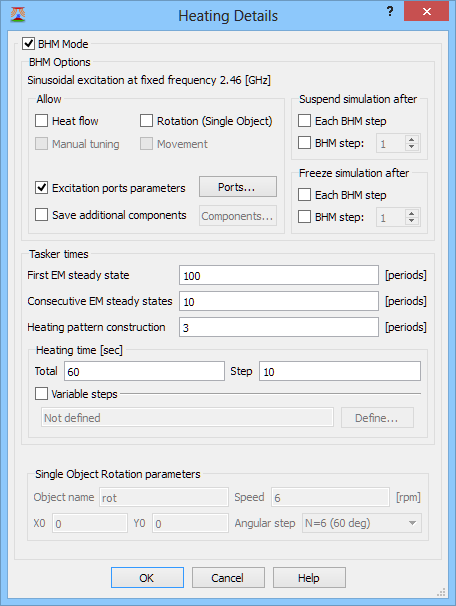

8.1 BHM scenarios with two ports
The example heat_2ports.pro includes two ports with sinusoidal excitation: templ1 and templ2.
In the Edit Transmission Line Port dialogue the user defines their default parameters.
In the Heating Details dialogue the user checks Excitation ports parameters and defines Tasker times.


Fig. 8.1-1 Heating Details dialogue in heat_2ports project.
After pressing the Ports… button, the user obtains the BHM Excitation Ports Parameters dialogue as presented in Fig. 8.1-2. The buttons: Reset, Load, Insert Step, Remove Step, Insert Row, Remove Row, Verify, OK are described in the QW-Editor manual. Refer to Chapter E 10.4 for details.
Parameters defined in each step are the starting parameters for the following step. For instance, STEP 1 is performed using parameters defined in STEP 0. Parameters for STEP 0 should be set in the QW‑Editor.
Fig. 8.1-2 BHM Excitation Ports Parameters in heat_2ports project.
The OK button closes the BHM excitation ports parameters dialogue and saves the ports' parameters in heat_2ports_VarExc.txt. See Fig. 8.1-3.
Fig. 8.1-3 Listing of the heat_2ports_VarExc.txt for heat_2ports project.
The exported file heat_2ports.ta3 (Fig. 8.1-4) now contains excitations parameters for each BHM step. The second line of the Change_Excitation_Parameters task contains two names: templ1, templ2. The next line contains two frequency values. The fourth line contains two amplitude values. The last line contains two delay values.

Fig. 8.1-4 File exported by QW-Editor for the heat_2ports.pro: initial fragment of heat_2ports.ta3.